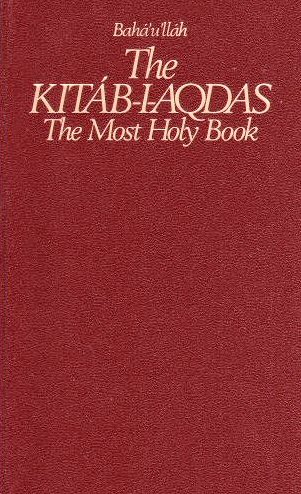| MOHAMMED REZA ISFAHANI, APRIL 2006 |
| |
Qurratul Ayn was the daughter of a religious scholar, the niece of a religious scholar, the wife of a religious scholar, and the mother of a religious scholar. Yet, as the article below will show, she was completely irreligious.
This lady of nineteenth-century Iran, far from being a dutiful daughter, continually opposed the theological positions of her father, Mulla Salih, a prominent Muslim cleric of Qazvin. Neither is she admired for her success as a wife and mother, since her estrangement from her husband resulted in her forced separation from her children as well. We can find the episode of her seeking divorce from her husband in the book of Nuqtatul Kaf, page 142. When Bab selected eighteen followers as his chief disciples and entitled them, along with himself, the Nineteen Letters of the Living. At the time, Tahera was a leading figure within the Shaykhi sect. Although she had never met the Bab, she immediately embraced his religion and was appointed a "Letter."
Given the Islamic environment in her house, she received education in all the traditional Islamic sciences and was able to translate many of the Bab's writings from Arabic into Persian. Despite her background, Taherah's writings were fiercely anticlerical. Basing her authority on her claim to an inner awareness of God's purpose, she instituted a number of innovations within the Babi community. Claiming that much of Islamic law was no longer binding upon Babis, she refused to perform the daily ritual prayers. But her most audacious act was occasionally to appear unveiled in gatherings of believers. According to Abbas Amanat, this was probably the first time an Iranian woman had considered unveiling at her own initiative. The circle of women who gathered around Tahera in Karbala, and later Qazvin, Hamadan, Baghdad, and Teheran, were perhaps the first group of women in those regions to have attained an awareness of their deprivations as women. Yet Taherah's activities did not represent a woman's liberation movement in the modern sense. For Tahera, removing the veil was primarily an act of religious innovation. Neither the writings of Tahera nor the Bab concern themselves with the issue of women's rights as such.
Taherah's activities created much controversy within the Babi community itself. Many Babis did not view the Bab's revelation as requiring a total break with the past or with Islamic law. They regarded Taherah's behavior as scandalous and unchaste. During the month of Muharram, 1847, Tahera deliberately excited their reaction by dressing in gay colors and appearing unveiled instead of donning the customary mourning clothes to commemorate the martyrdom of Imam Husayn. She urged the Babis, instead, to celebrate the birthday of the Bab, which fell on the first day of that month.
Babis generally accepted Quddus as the chief of the Bab's disciples, but Tahera reportedly said in regards to him. "I deem him a pupil whom the Bab has sent me to edify and instruct. I regard him in no other light." Quddus denounced Tahera as "the author of heresy." At one time when Quddus was rapt in his devotions, Tahera rushed out of her tent brandishing a sword. "Now is not the time for prayers and prostrations." she declared, "rather on to the battle field of love and sacrifice.".
(Ref: Religion and Women, Susan Maneck)
She also considered herself to be the return of Fatima, the beloved daughter of the Holy Prophet which to my mind is blasphemous. However it is important to bring this point to attention for my Muslim readers who revere the only daughter of the Prophet of Islam (pbuh).
(Ref: Nuktatul Qaaf by Mirza Jani, Page 141)
On one occasion at Baghdad and gave lessons in the Holy Quran, some of the Babis refused to eat the food prepared by non-Babis as being impure and were starving. At that occasion, Tahera claimed that she was a manifestation of Hazrat Fatima, and that her eyes were as Fatima's eyes and that everything she cast her eye upon became pure. Thereupon she ordered food to be brought from the markets and then cast her eye over it and it became lawful for the Babis.
Sipihr, the Qajar Court chronicler mustering the full force of his sobriety, reports that Qurratul Ayn Tahera not only believed in the unveiling of women, but endorsed the marriage of one wife to nine husbands. For her public addresses, he says: "She would decorate her assembly room like a bridal chamber and her body like a peacock of Paradise. Then she summoned the followers of the Bab and appeared unveiled in front of them. First she ascended a throne and like a pious preacher reminded them of Heaven and Hell and quoted amply from the Qur'an and the Traditions. She would tell them: "Whoever touches me, the intensity of Hell's fire would not affect him." The audience would then rise and come to her throne and kiss those lips of hers which put to shame the ruby of Ramman, and rub their faces against her breasts, which chagrined the pomegranates of the garden."
(Ref: Resurrection and Renewal, Abbas Amanat, page 321)
This is Qurratul Ayn - one of the Letters of the Living whom the Bahais look up to in awe. Much as the Bahais may try to raise her position, history informs us of the depths of her personality. Do the Bahais admire her views that every women should have no less than nine husbands; or that she encouraged men to touch her body and kiss her? If they do, then I would like to know how many present day Bahais would take her advice.
For my Muslim friends, I would like to remind them that this Bahai lady actually claimed to be a manifestation of the only daughter of the Holy Prophet (pbuh). She was amongst the first to give credence to the idea of manifestations and this is proved by the fact that after her, the Babis opened the flood gates of claiming to be manifestations of some Islamic personality or the other. She is also credited with being the first lady to unveil herself in Iran and the first to announce the end of Islam. This is the reality of the Babi and the Bahai Faith.
The Bab - Life and Times
blog comments powered by Disqus
![]() |
|  GET RSS
GET RSS
 A FREE ONLINE MAGAZINE ON THE EVENTS IN THE WORLD OF BAHAIS A FREE ONLINE MAGAZINE ON THE EVENTS IN THE WORLD OF BAHAISCLICK TO SUBSCRIBE |

